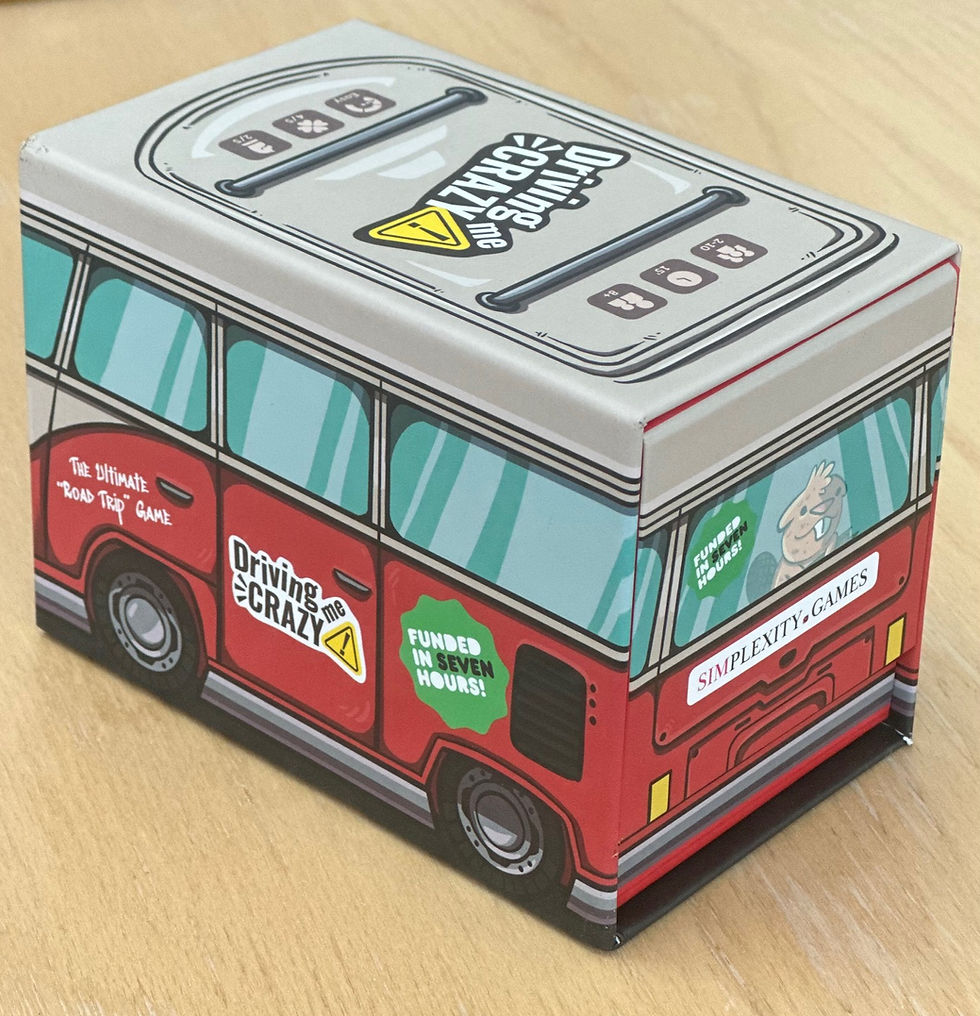Deckchairs on the Titanic
- Selwyn Ward

- Jul 23, 2021
- 3 min read
Updated: Jul 30, 2021
When Ideal/Milton Bradley published The Sinking of the Titanic in 1975, there were some who worried that the theme was in poor taste - so much so that the publishers felt obliged to rename the game as Abandon Ship. Close to another half century has passed and a board game is perhaps less likely to attract cries of 'too soon!' in using the 1912 maritime disaster as its setting. So it is that Silver Birch Games are pushing the boat out with Deckchairs on the Titanic.

The phrase 'rearranging the deckchairs on the Titanic' has fallen into the Lexicon as a metaphor for a pointless activity or one that contributes nothing to a problem that needs to be solved. It's that that designer Tom Holness has adopted as the setting for this essentially abstract game. You're not trying to save yourself or any of the passengers on a sinking ship, you're quite literally rearranging deckchairs to claim the prime spots ahead of rival deckchair attendants. You can see which direction the deck will be lurching next so you know how the deckchairs will slide at the end of each round, and you plan your actions accordingly.
Silver Birch have done a great job with the design of this game, with art by Miles Hesketh. It's played using three boards which together make up the deck of the ship. The bow accommodates the cards that show the direction in which the ship will shift and the aft section is just a decorative track for players' scores; it's midships where the game is played, and the game comes with two different midship setups for each of two, three and four players. Players have a set of deckchair meeples placed out on the deck, and there's a block of ice from the iceberg in the centre.
On your turn, you can move one of your deckchairs in any orthogonal direction, or you can move the ice block any distance until it hits a chair or the end of the deck. The ice will push along any chairs in its path, moving them the distance it moved. Alternatively you can place out your attendant meeple to hold onto a deckchair and prevent it from sliding when the ship movement action is taken. This will be after four actions each in a two-player game; three actions apiece when playing with three or four players. The deckchairs slide across the deck as indicated on the movement card and players score for the positions of their deckchairs: 4 points for occupying the centre square, 2 points for the square of your own colour and 1 point for being on a square of an opponent's colour. Play continues in this way until the movement card deck is exhausted.
Deckchairs on the Titanic is a well-designed abstract strategy game with a distinctive charm. It's easy to learn, and the 'theme' adds hugely to its appeal. It can be enjoyed as a casual family game but, played properly, it's a game where you need to plan ahead to maximise your own score while sabotaging the plans of the other players. There's a distinct element of programming because you must always plan for the ship's movement that is displayed and will take effect at the end of each round. Even if you focus primarily on optimising your own score, you're bound to take actions that adversely affect your opponent(s) but because this is a game where you are jockeying for position rather than 'attacking' other players, it doesn't feel like an aggressive 'take that' game.
Shown here on Board's Eye View is a preview prototype of Deckchairs on the Titanic ahead of its launch of Kickstarter. Click here to get on board the KS campaign.
(Review by Selwyn Ward)




